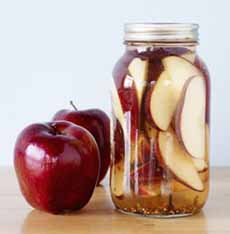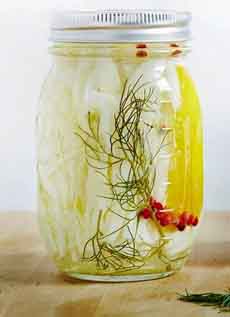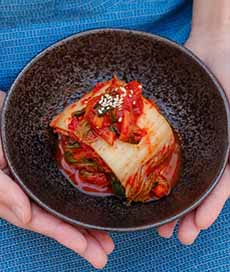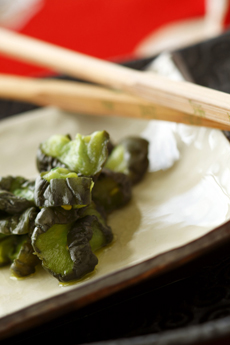|
|
Snack A Pickle Time, September 13th,is one of the more unusually-named food holidays. Pickle vegetables are an ancient food. Earthen pits were lined with leaves and filled with various foods. The earth maintained a low, steady temperature and may have contributed some microbes to speed the fermentation process. Naturally-present lactobacilli would begin fermentation within a matter of days; enough lactic acid would eventually be produced to preserve the food, sometimes for years. Here’s more on the history of pickles. Your next step: Pick some pickles to celebrate the day. The celebration continues on November 14th, National Pickle Day. July is National Pickle Month. In the cuisines of the world, there are thousands of different pickle types. China makes an estimated makes 130 different kinds of pickles; there are some 200 types of Korean kimchi. Pickled vegetables are used as condiments or eaten as side dishes. What Americans call “pickles” are typically pickled cucumbers; but pickled apples, asparagus, beets, bell peppers (remember Peter Piper), cabbage, carrots, cauliflower, fennel, jalapeño, mushrooms, okra, onions, peaches, radishes, tomatoes, watermelon and many more foods are pickled—including sauerkraut, pickled cabbage—and hence, are also pickles. Beginning in the last century, immigrants from countries beyond Europe have brought their own wonderful pickle traditions. A small example: >Here’s a list of pickled foods worldwide. Our own Pickle Glossary features mostly European-style pickles, with some global varieties added (we’ll be adding more). By the way, olives, which have been pickled in the Middle East since pre-history, are pickled—not pickled vegetables, but pickled fruits—the fruits of the olive tree. Cucumbers are also botanical fruits, as are tomatoes (the difference between fruits and vegetables). What about pickled fruits? Long before the invention of canning, fruits were preserved by pickling. In the U.S. alone, anything that could be pickled was pickled: apples, apricots, apricots (blackberries, blueberries, cranberries), cherries, crab apples, currants, grapes, melon, peaches, pears, plums, raisins, tomatoes (including cherry and green tomatoes)…just about any fruit can be pickled. From around the world, we have pickled mango, You don’t need to preserve fruits and vegetables to enjoy them pickled. You can pickle them in an hour without any equipment (meant to be consumed in a week or two, not for long-term storage). Why not start with pickled apples, which are delicious: Pickling and fermenting are different ways to the same end, i.e., preserving the vegetable. The difference: Here’s more about it. |
|
|
|
||
Pickles: Pickled Fruits & Vegetables For A Pickle Holiday
← Older Post Newer Post →






